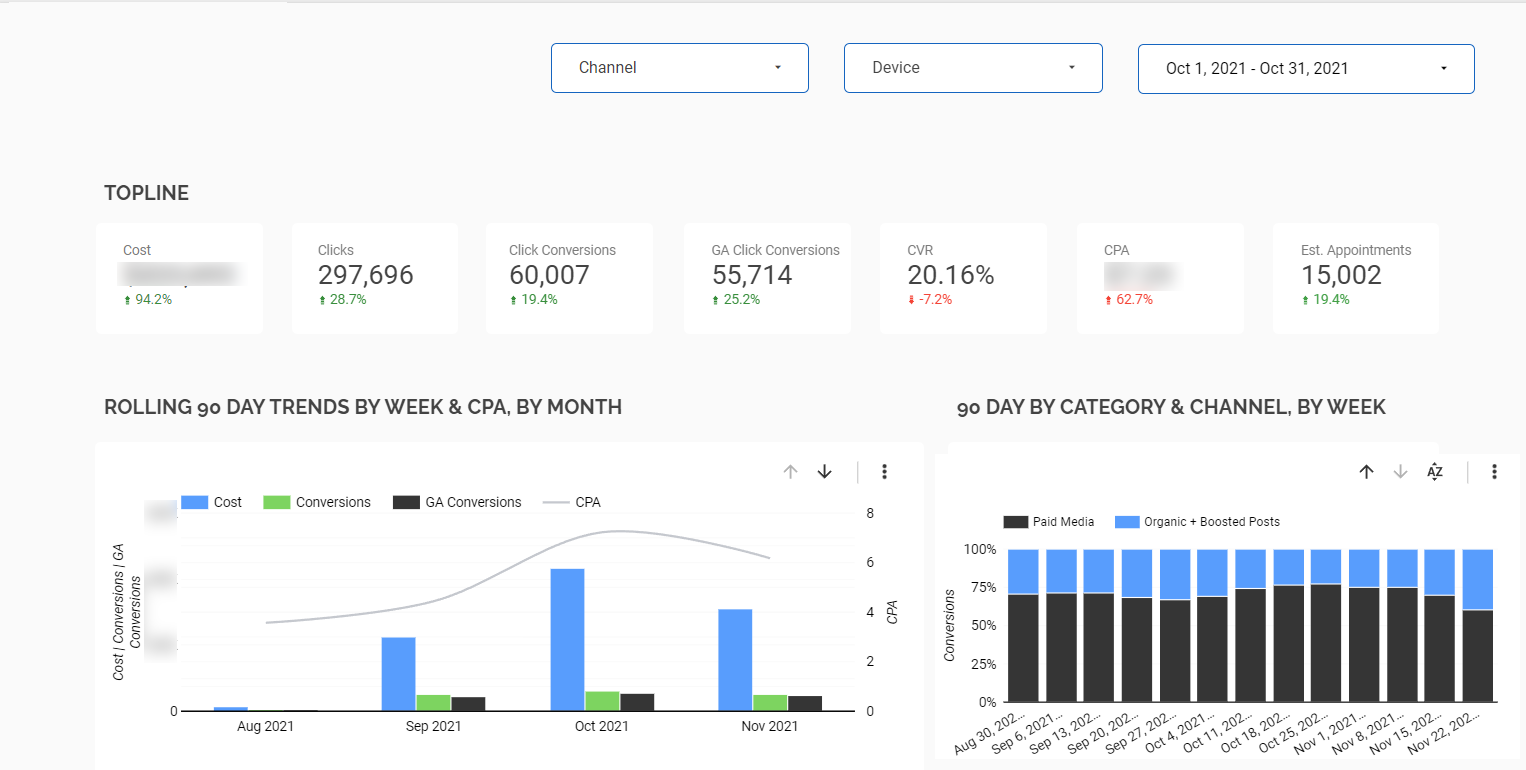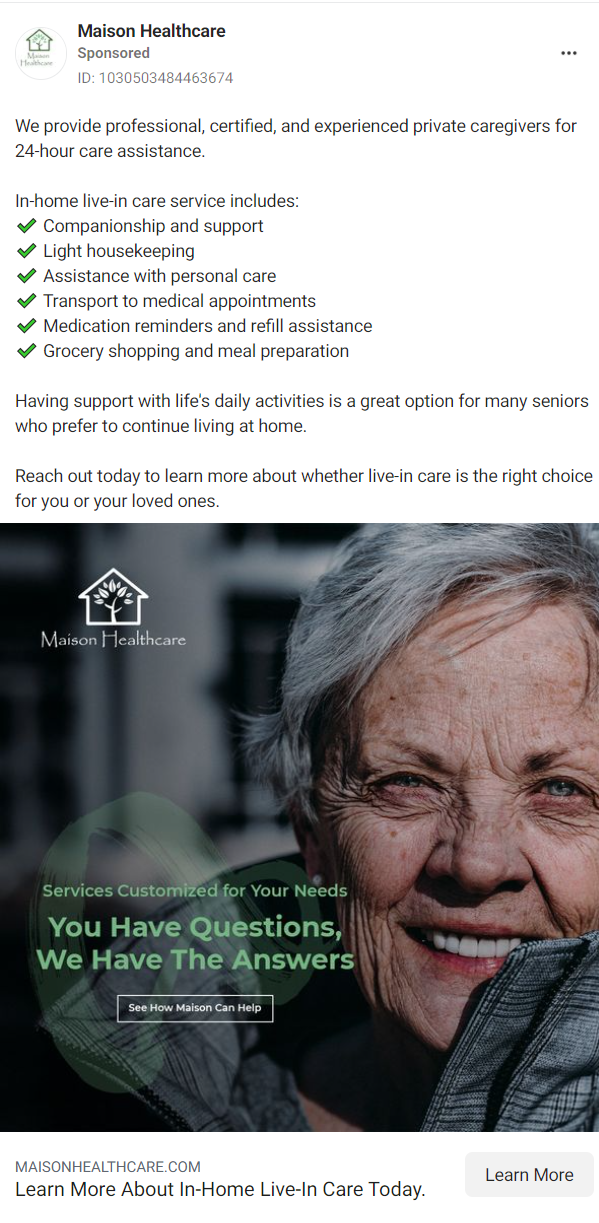In healthcare, the harsh reality is that no single organization can help everybody. I’d like to take that notion a step further. No single healthcare organization should help everybody. Why? Because every healthcare journey is a little bit different. And if it’s not a good fit, neither the patient nor the healthcare organization will arrive at the best outcome.
Table of Contents
- A Five-Step Approach to Improving Lead Quality
- 1. Evaluate the Leads You’re Already Creating
- 2. Know How to Spot the Signs of Suffering Lead Quality
- 3. Hone Your USP and Strengthen Your Ad Creative
- 4. Train the Algorithms
- 5. Sharpen Your Lead Management Processes to Improve Conversion Rates
- In the End, It’s About Narrowing the Focus and Working Smarter
Unfortunately, many healthcare organizations are great at reaching a lot of the wrong people. I see it all the time: the marketing team puts a high volume of leads into the pipeline, but the quality is poor. It’s not a fit. As a result, those patients aren’t converting into booked appointments. This, in turn, costs the organization time and money.
If you’re in senior care, addiction treatment, or behavioral health (or any healthcare offering that requires more consideration for a purchase decision), you know exactly what I’m talking about.
Here’s what you need to do.
A Five-Step Approach to Improving Lead Quality
The healthcare organizations building strong lead-generation strategies are strong in five core areas. They know how to evaluate leads properly, for one—they understand core data points like customer acquisition cost (CAC). Next, they avoid the common causes of poor lead quality. Third, they have a framework that tracks conversions properly and ensures high lead quality. Finally, they know how to manage and nurture leads, not just create them.
Let’s take a closer look at each part.
1. Evaluate the Leads You’re Already Creating
“Measurement is the path to understanding,” a Very Wise Person once said. You need to examine your existing lead data to see where the good leads come from and where there’s room for improvement. The data should show you what good and bad leads search for and the steps they take along the journey. It will show you where leads come from, too (PPC, Facebook Ads, organic search, and so on).

As you parse the data, look for trends that might indicate an opportunity for improvement. You’re looking for those a-ha moments in the journey where you say, “ah, THAT’S why so many of our profitable surgery leads don’t convert—they need more information on post-surgery rehabilitation care.” To that end, a few important metrics ought to provide some clues:
- Length of buyer’s journey
- Click-through rate (CTR)
- Conversion rate (CVR)
- Customer acquisition cost (CAC)
- Revenue contribution
Another place to gain insight into the patient journey is your call logs. Call tracking and analytical software, like Invoca and Liine, can help you identify the source of poor lead quality. By analyzing call recordings, you can identify common trends that result in a mismatch between you and a prospect. This leads us to our next point…
2. Know How to Spot the Signs of Suffering Lead Quality
As part of your evaluation, you’ll want to look for the common signs and causes of poor lead quality. The three most common causes that we see are:
Mismatch between what the lead wants and what you offer
How well do you know your ideal customers and what they want? If you’re not meeting their needs and intent at each stage, your lead-generation metrics will suffer.
Messaging either over promises or inaccurately describes your solution
Expectations are everything. If a lead enters your pipeline expecting to consult with a surgeon but can’t get an appointment for six months, you might have a problem. Or your website says you offer a service that you really don’t.
Messaging doesn’t provide enough detail about your solution
One common example is the healthcare provider that doesn’t offer insurance information on their website. What happens when leads come in that may need a different type of insurance or payment option? Insurance is a widespread objection.
3. Hone Your USP and Strengthen Your Ad Creative
Some call it a recipe for improved lead quality. We call it a framework. Either way, you need to make these three disciplines an embedded part of your lead-generation strategies:
Research the Ideal Patient
You need to understand what your ideal patient is actually looking for so you can appear on searches for those keywords. One way to go about it is to build a comprehensive keyword strategy. Your keyword strategy is the foundation that determines the success of your advertising and SEO strategy. Both rely on your ability to target the keywords your ideal customers are using.
Where can you source that information? Try customer surveys of past patients for a particular service or product, for one. You can also tap into (or conduct yourself) larger market research. One-on-one patient or customer interviews can also provide valuable insight.
You might also rely on customer data analysis and call tracking for your research purposes. The latter is an interesting tactic, as you can listen to recordings to identify common problems, yet another way to understand your customer in their own words.
Define Your Unique Selling Proposition (USP)
In How to Define Your USP and Improve Your Healthcare Marketing, I go into great detail on the importance of a crystallized USP. The strength and specificity of your USP will differentiate you in crowded and competitive markets. It can help improve lead quality by engaging and persuading your ideal patient.
To define your USP, you can use many of the same avenues you use for keyword and customer research. Generally, think about the unique capabilities or services that you offer. Special equipment or technology? Training, experience, or credentials? What about your patient experience? These are common differentiators for healthcare providers.
Invest in Good Ad Creative
Good ad creative is key to helping you attract the right people through digital advertising. We see a lot of generic, cookie-cutter digital ads in healthcare. While this “spray and pray” approach might generate lots of impressions, clicks, and even leads, lead quality and cost tend to be poor for a couple of reasons:
- No differentiation in terms of messaging and branding
- Doesn’t resonate with the people who want what you’re offering
What goes into differentiated ad creative? First and foremost, the messaging ought to embody your USP in creative and engaging ways (time to hire a copywriter!). Yet, your graphics and linked marketing assets (blog posts, testimonials, etc.) are another opportunity to articulate your USP and show your value to your ideal customer.

4. Train the Algorithms
For effective advertising, you must capture quality signals (site engagement, form submissions, calls, and actual booked appointments) and transfer those signals back to advertising platforms to inform algorithms. When the algorithms know which forms-fills and calls turned into real patients, they can then optimize to find more people like those using machine learning.
Since the release of an HHS bulletin in December 2022 and FTC complaints against prominent providers, this has become much more difficult. However, data-driven marketing is still possible with the right HIPAA-compliant technologies.
Read 3 Ways to Improve Google Ads Lead Quality for Healthcare to get specific conversion tracking, and Google Ads lead management tips.
5. Sharpen Your Lead Management Processes to Improve Conversion Rates
You can improve lead quality considerably by focusing your efforts on lead generation. You can also do so after the fact—after a lead comes in through form-fills or calls. What’s preventing those patients from booking appointments? Sometimes, it comes down to a lack of quality “touches” from sales, marketing, and practice operations.
To that end, monitor the sales process in terms of the volume of calls coming in, as well as the quality of follow-up. You might find that messages and calls aren’t getting returned due to staff shortages or a broken process. I’ve seen situations where leads just get lost in the CRM because they’re not tagged properly. As leads advance through the funnel, it’s so important to track progress using your CRM system.
Then there is your lead nurturing. As they say, out of sight, out of mind, especially for healthcare decisions that take a long time (plastic surgery, for example). This is why you need to nurture leads with routine communication. At the very least, new leads ought to be put into bucketed nurture sequences (email or text) that keep your solution top of mind.
In the End, It’s About Narrowing the Focus and Working Smarter
The common theme across all four parts of the approach we’ve laid out is two-fold:
- Be far more efficient with the leads you already have
- Be a lot more intentional about your target audience and their pain points
You don’t increase your win rate by bombarding the entire internet with ads. You do it by getting the most of your existing lead pipeline and addressing your audience’s pain points with greater efficacy. To that end, here’s John McAlpin, our SEO Director, in our webinar on how to build successful SEO strategies:
“One thing better than keyword research is your actual patient. If you’re the provider, talk to the people answering the phone and booking appointments. Find out what the difference is between someone booking an appointment and not. A big one in healthcare is insurance. Find out what that barrier to entry is and make that prominent on your website, in your campaigns, etc.”
If I had to put my money down on why your lead quality is suffering, I’d say the answers are already there. You just need to know where to look for them.

